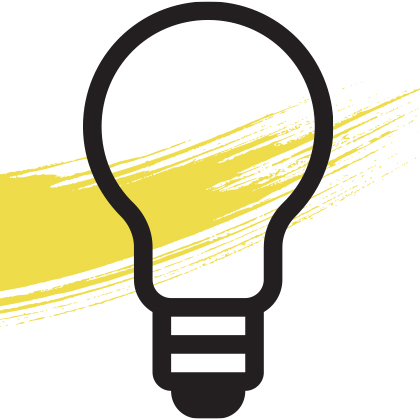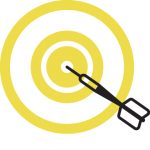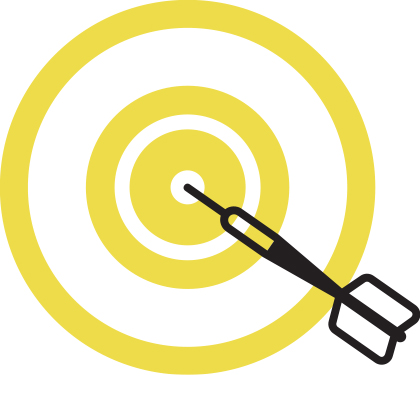
 Roy Ziegelstein, M.D., is a noted cardiologist, Vice Dean for Education, inductee of the Miller-Coulson Academy, and the Sarah Miller Coulson and Frank L. Coulson, Jr., Professor of Medicine. He is also a painter, a very good one. At the CIM’s International Advisory Board meeting in October, he talked about some of the things he’s learned as an artist that have made him a better physician.
Roy Ziegelstein, M.D., is a noted cardiologist, Vice Dean for Education, inductee of the Miller-Coulson Academy, and the Sarah Miller Coulson and Frank L. Coulson, Jr., Professor of Medicine. He is also a painter, a very good one. At the CIM’s International Advisory Board meeting in October, he talked about some of the things he’s learned as an artist that have made him a better physician.
He began with a word about Henri Matisse and his followers, who were known as Fauvists. This name stuck in 1905, when a critic named Louis Vauxcelles saw a classical sculpture by Donatello surrounded by works of Matisse and others that looked untamed in comparison, and made the snarky comment that there was “a Donatello amongst ‘les fauves,’” or the “wild beasts.”
“When we narrow or restrict the groups of people we listen to, everything appears black and white. Issues are polarized. People are good or bad.”
“Fauvism was one of the most innovative movements in art,” said Ziegelstein, but “like innovation in medicine and other fields, it was a disruptive force that initially was not well understood or appreciated by others. To some degree, that is what David has created with the Center for Innovative Medicine. I remember when David first thought of creating an academy to recognize the importance of clinical excellence.” The idea, supported by Sarah Miller Coulson, her late husband, Frank, and their family, “was not immediately understood.” Although nobody compared it to the work of wild beasts, “some wondered why we needed such an academy in a place where people were devoted to patient care.” And yet, this year, Miller-Coulson Academy director Scott Wright, M.D., reports a record number of applicants. “I told Scott that it was like the CIM had created the Field of Dreams: if you build it, they will come.”
What can medicine learn from the way an artist looks at things? Ziegelstein offered the IAB members three examples:
First, the way an artist sees. Actually, Ziegelstein said, it’s not so much how artists see the world that sets them apart, but how they think. “In fact, Picasso famously said, ‘I don’t paint things the way I see them, but the way I think them.’ And thinking things differently is just as important a virtue in medicine as it is in art.”
When we speak in public, “we are constantly vigilant and aware of what we are saying, because a certain processing part of the brain is active.” But in improv, that part of the brain is turned off.
Squinting. Artists squint a lot when they look at their subject, and Ziegelstein asked his audience to do the same. “You’ll notice the shadows get darker and the highlights get lighter, and this helps to better define shapes… when you narrow your view, you see the contrasts.” But this can happen when we listen, too, he continued. “When we narrow or restrict the groups of people we listen to, everything appears black and white. Issues are polarized. People are good or bad. We don’t see the subtleties in the issues that confront us and doctors fail to see the range of humanity in the people they care for.” Although squinting can help artists, Ziegelstein doesn’t recommend it for doctors. “Doctors need to surround themselves with people who widen their perspective, and who help them see the breadth of the human condition, so they can see the subtleties in the people they associate with and care for.”
Gesture drawing. This is an exercise artists do, with a model changing poses every three minutes or so. “As an artist, you can’t possibly draw or paint the details in this limited time, but you can capture the position of the figure in space.” Ziegelstein compared gesture drawing to jazz improvisation, and described some research by former faculty member Charles Limb, M.D., who “studied the process of improvisation by having jazz musicians play music from rote memory and then having them improvise while in a special type of MRI scanner that is able not only to image the anatomy of the brain but also its function. What he’s found is that improvisation activates some areas of the brain, but it turns off other brain structures that are implicated in the semantic processing of language.” Limb suggested that when we speak in public, “we are constantly vigilant and aware of what we are saying, because a certain processing part of the brain is active.” But in improv, that part of the brain is turned off. Because of all they have to process every day, and because of the stress and human emotion they encounter daily, Ziegelstein said, “I think many doctors ‘learn’ during training that they should constantly check their own emotions, almost for self-protection. As a result, showing emotion is often considered weak. I think doctors therefore often seem unfeeling. Insensitive. Even arrogant. I think doctors should learn the lessons of gesture drawing and improv and try to shut the processor off. It will make them more natural and more human. I think patients will appreciate that.”
Don Willett November 19th, 2016
Posted In:

 Everybody hits roadblocks.
Everybody hits roadblocks.
Maybe you’re a scientist, and you can’t see your way around a thorny research problem. Maybe you’re a physician, and you’re having trouble pinpointing a patient’s diagnosis after many tests. Or maybe you’re a writer, and you’re aiming to produce something effervescent and delightful, the equivalent of a verbal soufflé, and you feel like you’re turning out hardtack instead.
Maybe what you need to do, so you can make that creative leap outside the box, is put the box away for a little while. Think about something else instead, and while you’re doing that, something weird will happen: your brain will keep right on wrestling with that original problem.
That’s what Adam Riess, Ph.D., did. He is a Johns Hopkins astrophysicist and Bloomberg Distinguished Professor, who won the 2011 Nobel Prize in Physics for his team’s discovery that the universe’s rate of expansion is speeding up.
At the Center for Innovative Medicine’s International Advisory Board meeting in October, Riess talked about creative thinking and other topics with IAB member Bo Shao, an entrepreneur and math genius who also knows quite a bit about overcoming obstacles, himself. Briefly, Shao, born in Shanghai, learned math by adding up a deck of playing cards – all he had to work with – practicing so much that by the time he was 12, he could add up all 52 cards in 12 seconds. He won math competitions in China, and as a junior in high school, received a full scholarship to Harvard.
Think about something else instead, and while you’re doing that, something weird will happen: your brain will keep right on wrestling with that original problem.
“Adam, a graduate of MIT, was wait-listed for Harvard for a Ph.D. program in physics,” says Shao. “He got into astronomy instead. He was also wait-listed for a fellowship at Berkeley for a postdoc position; fortunately, Berkeley wised up. What’s interesting is, he did the work for which won the Nobel Prize when he was 29 years old. So he was obviously an incredibly accomplished, successful person: why is it that people didn’t see it?” And a question for the IAB and the CIM: “What can we, who are in the position of giving resources and hiring people, learn from this?”
Raw intelligence, Shao believes, is only part of the equation. “What’s really important is also drive, persistence, the ability to communicate and work with other people.” That “full package” is as important in science as it is anywhere else. “I thought that was really interesting: it’s not that the Nobel Prize winner has the highest IQ in the room; it’s a combination of other factors that makes someone have breakthroughs. Also, Adam’s incredibly humble; the fact that he would even mention that he was wait-listed is indicative of what kind of a person he is. Maybe it’s the way he is as a person that led to his success.”
Riess’s ability to solve a puzzle continues even when he’s not actively contemplating it. He told Shao that often, when he runs into an obstacle in the lab, he’ll step away from it for a while. “He’ll noodle on it in the back of his mind as he goes through other things,” says Shao, “mundane stuff.”
Who would have thought that the movement of the buoys in the water would be connected to the measurement of supernovas?
For example, once a problem had Riess stumped. Then, as he was swimming, he noticed how the buoys move through the water. “It’s really hard to measure how one buoy moves through the water. But if you look at a line of buoys, it’s easier to measure the average movement.” This observation led Riess to a breakthrough in measurement technique, which led to better precision – which ultimately led to his Nobel Prize-winning discovery. “That’s also congruent with my own experience,” says Shao. “I keep using my prefrontal cortex to think about something, and it sometimes gets stuck. It’s when you turn off the conscious mind and go through life, and a spark comes out of nowhere.
“That’s not inconsistent with the latest neuroscience. By the time an idea surfaces, it’s actually been percolating for some time. We think we just got it, but on a subconscious level it was already formed, and at some point the brain will let it past the threshold into our consciousness.”
Learning when to wait for the right idea is an important skill, too – again, one that can have little to do with someone’s qualifications on paper, or with standard “in the box” thinking. In 1999, after earning an M.B.A. from Harvard Business School, Shao returned to China and started EachNet, an online marketplace. The next four years were tough, with what he describes as “a lot of trial and error and the boom and bust of the Internet industry,” but Shao and his team hung in there, overcame roadblocks with creativity, hard work and persistence, and sold EachNet to eBay for $225 million.
What’s the take-home message for the CIM? “I think when we look for people with creative ideas, we need to keep an open mind,” says Shao, “to look for a wide variety of talent. Bringing people together from different disciplines and perspectives – I do think it will lead to sparks. Creativity comes from a cross-pollination of ideas. Who would have thought that the movement of the buoys in the water would be connected to the measurement of supernovas? The same can be applied to any innovation: put people from different walks of life together and you may come up with an unforeseeable new idea. It’s unforeseeable because by definition, we cannot progress until we get it.”
Don Willett November 19th, 2016
Posted In:

 You may remember Francoise Marvel, M.D. Last year, as a second-year resident at Johns Hopkins Bayview, she saw a need: 39 million hospital discharges happen every year in the U.S., and nearly 20 percent of those people wind up back in the hospital within a month. At highest risk during that critical 30 days are heart attack patients.
You may remember Francoise Marvel, M.D. Last year, as a second-year resident at Johns Hopkins Bayview, she saw a need: 39 million hospital discharges happen every year in the U.S., and nearly 20 percent of those people wind up back in the hospital within a month. At highest risk during that critical 30 days are heart attack patients.
At least some of the fault lies in the hospital discharge instructions; these are inconsistent, often written by an intern or medical student and delivered by a nurse, and not terribly user-friendly. It’s a lot of information to absorb in a short period of time, especially to a patient who just wants to get in the wheelchair and be wheeled out to the curb, get in the car, and go home. One study in JAMA showed that only 40 percent of patients over 65 who felt like they had a good understanding of their discharge instructions could describe accurately why they had been hospitalized, and 54 percent did not accurately remember instructions about their follow-up appointment.
No wonder so many people end up back in the hospital. Poor communication can have serious consequences. Many heart attack patients go home with a stent to help keep a clogged artery open, and it is extremely important that they hear these words: You must take aspirin and Plavix, two essential blood-thinning medications. “That stent is very sticky,” Marvel says. “Until the cells grow around it, without those blood thinners it’s almost certain that a clot will form.” These people need to take this medicine every single day and not stop, and “if they don’t do this, they will have a massive heart attack.”
“What our team is accomplishing will be transformative. We represented to the fullest what Hopkins is all about.”
Marvel began developing a prototype of an app that would serve as a discharge navigator. Designed for people who, like most of us, don’t know the first thing about cardiac rehab, the app walks them through the steps: it helps patients follow up with the heart doctor, connect with a pharmacy, social services, and even apply for insurance if they don’t already have it. A key part of the app’s success, Marvel believed, is that patients would start getting familiar with it while they were still in the hospital – avoiding a last-minute flood of confusing instructions.
Apple loved it. This summer, the tech giant invited Marvel and members of Hopkins’ Corrie Health Team including cardiologist Seth Martin, and three tech experts, Matthias Lee, Gavi Rawson, Jal Irani, and Ali Afshar, out to Cupertino, California – to Apple’s Special Projects Office, “the same building where iTunes was created,” Marvel notes – for a week of creative brainstorming and intensive development and design. “By leveraging Apple’s medical app platform, CareKit, and Apple Watch technology, we were able to reinvent inpatient heart attack recovery and outpatient cardiac rehabilitation,” Marvel reports. The collaboration between the Hopkins and Apple teams began strong and throughout the intense week, built “tremendous momentum.”
Together, “we built a truly unique app that will be a comprehensive navigator to help patients recover from a heart attack,” Marvel says. The app evolved to have five major sections:
But wait, there’s more! “We incorporated a ‘smart watch’ component with Apple Watches,” says Marvel. “In fact, Apple donated 200 Apple Watches for our first cohort of patients” for recovering heart attack patients. Using both the app and the Apple watch, patients will monitor their daily steps, their heart rate, set activity goals, and get help staying on track with reminders for medication and follow-up doctor’s appointments.
Apple loved it.
“Words can’t describe our excitement,” she continues. “Apple was so impressed with our development, progress and vision that they arranged for us to meet with Jeff Williams, Chief Operating Officer. He was highly complimentary of our work and plans to make a field trip over to Hopkins and see our clinical deployment of the app in person! What our team is accomplishing will be transformative. We represented to the fullest what Hopkins is about.”
Don Willett November 19th, 2016
Posted In:

 We’re growing up. Ideas that were just a gleam in our eye a decade ago – the Aliki Initiative, the Miller-Coulson Academy, Medicine for the Greater Good, our research Cores – have blossomed from dreams to blueprints and into established programs implemented throughout Johns Hopkins and outward to other institutions.
We’re growing up. Ideas that were just a gleam in our eye a decade ago – the Aliki Initiative, the Miller-Coulson Academy, Medicine for the Greater Good, our research Cores – have blossomed from dreams to blueprints and into established programs implemented throughout Johns Hopkins and outward to other institutions.
Young clinician-scientists who were with us from the very beginning in 2006 now serve in high leadership positions at Hopkins, and their CIM ties remain strong. This fall, they joined nearly 70 Johns Hopkins leaders, clinicians, nurses and scientists, at our third annual CIM retreat. Joining us were four presidents of Johns Hopkins hospitals, three Bloomberg Distinguished Professors of Medicine, five Vice Deans of the School of Medicine, the president of Johns Hopkins Community Physicians, and the President of Johns Hopkins Healthcare. Also present were some of our very youngest members, including medical resident Francoise Marvel.
One of those leaders is Jonathan Ellen, M.D., now President and Vice Dean of Johns Hopkins All Children’s Hospital in St. Petersburg, Florida, who moderated the retreat and offers his perspective on the CIM: “A lot of us started on the Bayview campus with David: Landon (King, Executive Vice Dean), myself, Antony (Rosen, Vice Dean for Research), Roy (Ziegelstein, Vice Dean for Education). We were all there together, and David Hellmann inspired all of us.” The CIM’s achievements, he adds, “are all things that grow out of that spirit of collaboration and innovation that puts the patient at the center. As I’ve watched it grow, I’ve learned a lot of lessons that I’ve taken here to Johns Hopkins All Children’s Hospital about the value of supporting the creation of ideas. David created this core of people who believe in collaboration and are committed to innovation. The CIM just grew, and it grows logarithmically.”
“We say, ‘that’s a great idea. Let’s make it work.’ It’s a figure-it-out kind of crowd.”
So where are we headed? “We are a world-class institution for medical education, research, and patient care, in a neighborhood where many people live below the standard of living,” Hellmann told the attendees, “where people die younger than they should, of diseases that could be preventable, or of complications that could be diminished with proactive medical care, better diet and exercise. We can’t be all things to all people, but we can be important things to some people, here at home and around the world. What would you do if Johns Hopkins Bayview won the lottery, and you got to pick how we spent the money? If you got to call the shots, how would you have us take ours?”
The idea of “taking our shot” was inspired by the Broadway hit musical, Hamilton, and proposed by Hellmann as this year’s retreat theme. This tale of early American statesman Alexander Hamilton is told in an unexpected way: through hip-hop music. Hamilton himself, as portrayed in the play, is hungry and ambitious – a man who dreams big, and has the energy, creativity and focus to make those dreams happen. Where others see obstacles and trouble, he sees opportunity and solutions.
“David loved the idea that we have our one shot to do great things, to make a meaningful difference and leave a legacy,” says Greenberg. “He asked everyone to ponder, what one or two actionable things would you like to do or do you see that need to be done to make medicine a better public trust? And how can we get from here to there?”
“We can’t be all things to all people, but we can be important things to some people, here at home and around the world. What would you do if Johns Hopkins Bayview won the lottery, and you got to pick how we spent the money? If you got to call the shots, how would you have us take ours?”
Our 2016 retreat was held for the second year in a row at Greenberg’s lovely home out in the countryside of Baltimore County. “The idea was, you leave Bayview, leave Hopkins Medicine behind, and come out to the country,” says Greenberg. “The environment is important to say you’re in a different place.” She and Hellmann hoped getting “really smart people in the same room talking about big ideas and not small ideas,” would encourage participants to go for it – to dream big. Shortly before eight on an overcast morning, a long line of cars started to pull into the driveway. “Everyone arrived right at the same time, we sat down right away, Jon Ellen called upon individuals to say what their shot would be, and the answers were stunning.
“One physician said, ‘We should be screening every child in Baltimore City for asthma. We need to do the right thing.’ Others said, ‘we need to make Bayview the innovation hub for Johns Hopkins Medicine. We should be the Silicon Valley of Baltimore.’ There were incredibly beautiful and thoughtful comments.” Johns Hopkins Bayview, Greenberg adds, “is going through a renaissance, and I think the CIM has driven it – driven the notion that anything is possible. It’s a big place, a beautiful campus. It is seamlessly integrated with the Broadway campus, but there’s more room, there are more institutes, and more specifically driven agendas. You can breathe there. It makes you think of who you want to be. This was David’s effort to energize and tease out their biggest, best idea – knowing that it could possibly come true.”
“We got people to suspend the how, and focus on the what and why, and that’s what you want from a session like this. That’s the shot.”
As moderator, Ellen’s job was to help participants focus on Population Health, Precision Medicine, and the Good Doctor. “What we got was a really nice dialogue around these topic areas, and certain ideas started to emerge. We got people to suspend the how, and focus on the what and why, and that’s what you want from a session like this. That’s the shot. So we came up with the what and the why, and now it’s time to do the how.”
We’ll be telling you more about these ideas in future issues of Breakthrough, but one of the most important is a CIM-led plan to improve the health of the people in the neighborhoods surrounding Bayview.
“Some ideas are big and dreamy,” says Greenberg, “and some ideas are big and dreamy and possible to act upon – we can actually get them done. The impediments to dreaming – people who say, ‘that’s a great idea but it’s never going to happen’ – this is the antithesis. We say, ‘that’s a great idea. Let’s make it work.’ It’s a figure-it-out kind of crowd.”
Don Willett November 19th, 2016
Posted In: